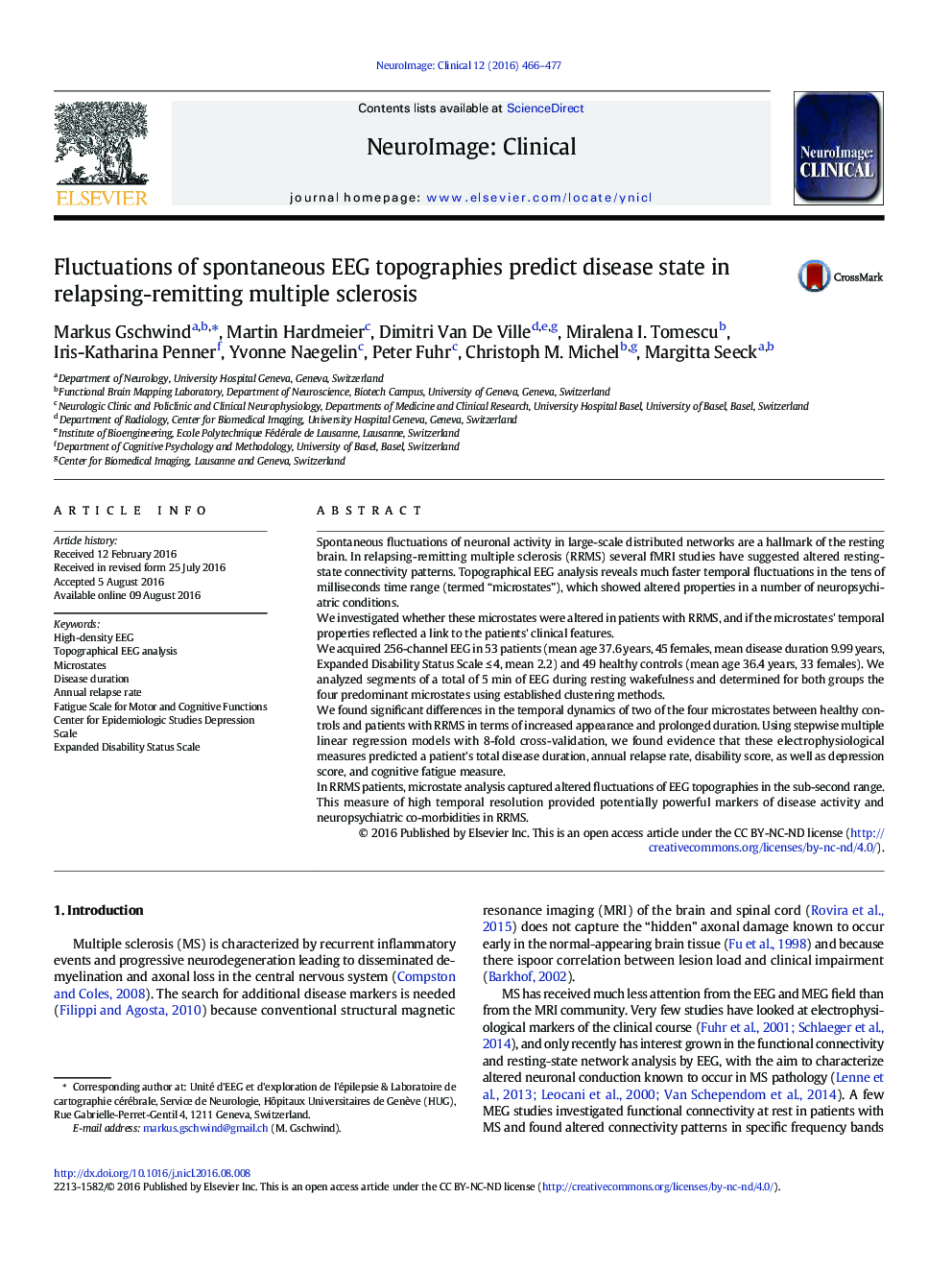| Article ID | Journal | Published Year | Pages | File Type |
|---|---|---|---|---|
| 3074836 | NeuroImage: Clinical | 2016 | 12 Pages |
•EEG microstates analyses provide high resolution of temporal dynamics of brain networks.•Temporal parameters of EEG microstates are altered in Multiple Sclerosis•Altered microstate parameters predict several clinical characteristics in patients•We propose an EEG microstate based marker to characterize disease evolution in patients
Spontaneous fluctuations of neuronal activity in large-scale distributed networks are a hallmark of the resting brain. In relapsing-remitting multiple sclerosis (RRMS) several fMRI studies have suggested altered resting-state connectivity patterns. Topographical EEG analysis reveals much faster temporal fluctuations in the tens of milliseconds time range (termed “microstates”), which showed altered properties in a number of neuropsychiatric conditions.We investigated whether these microstates were altered in patients with RRMS, and if the microstates' temporal properties reflected a link to the patients' clinical features.We acquired 256-channel EEG in 53 patients (mean age 37.6 years, 45 females, mean disease duration 9.99 years, Expanded Disability Status Scale ≤ 4, mean 2.2) and 49 healthy controls (mean age 36.4 years, 33 females). We analyzed segments of a total of 5 min of EEG during resting wakefulness and determined for both groups the four predominant microstates using established clustering methods.We found significant differences in the temporal dynamics of two of the four microstates between healthy controls and patients with RRMS in terms of increased appearance and prolonged duration. Using stepwise multiple linear regression models with 8-fold cross-validation, we found evidence that these electrophysiological measures predicted a patient's total disease duration, annual relapse rate, disability score, as well as depression score, and cognitive fatigue measure.In RRMS patients, microstate analysis captured altered fluctuations of EEG topographies in the sub-second range. This measure of high temporal resolution provided potentially powerful markers of disease activity and neuropsychiatric co-morbidities in RRMS.
